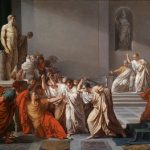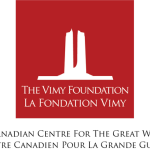
By John Meyers
Decades ago in British Columbia I attended my first improvisational theatre show and was hooked. Since then I have taken classes, been in some shows, and taught improv games to both students and student teachers. As I approached retirement I wanted to put myself into the head of a learner so I could avoid “the curse of knowledge” (Heath and Heath 2007). We too easily forget what is like when we learn new things. Just because the heads nod when you tell students something does not mean they get it. History and social sciences are full of complex abstract ideas and ways of thinking that even senior high school students cannot easily or automatically grasp. For example, we tell jokes or make analogies that fail to connect with student experiences: spoiler alert- Jerry Seinfeld is in his mid-sixties!
So while waiting to return to physical classrooms we might look to new ways to connect with our students. Improvisation forces you to think on your feet: a feature of “adaptive expertise”. Adaptive expertise goes beyond initial core competencies that we learn in education and AQ classes to expand both the breadth and depth of our expertise. There is no magic formula and even if there were it is not enough to tell you how to do it since much of what works for you is contextual (Darling-Hammond and Bransford, 2005).
Here are things I have learned through my classes that you can see and use in your own teaching.
Leave your ego at the door. It is a challenge to know you are going to fail and not lose patience or just give up, especially in the early phases of learning (and teaching). When routines fall flat and you get little response let alone the laughs you want from the audience you can imagine what happens to students as they are learning new things and screw up or when you reproach yourself when a lesson bombs.
Look for feedback. How am I doing? What is working? What can I do to get better? As a veteran learner I can do this. Imagine some grade 7 kid taking history (or any other subject) with new content and new skills to learn. “You mean the answer is NOT in the textbook?” “I can’t google my way out of this?” “I have to work with other students and come up with an answer- and DEFEND it?” “What if my answer is wrong? How will my peers and you, my teacher, react if I look or sound stupid in front of everyone?” “Will I get another chance to try again?”
Trust is key to working with others and even when you are on your own Throughout my improv classes feedback we receive from instructors and our peers build both trust and the feeling that we CAN improve. On the other hand, if I do not trust the person offering feedback, why should I change my behavior or my thinking? Teamwork works when the goal of every member is to make their partner look good as good improvisation performers do. Rising tides DO lift all boats.
The power of REALLY listening is something we struggle to learn, both in improvisational performances and in our own classes. As Dan Pink has pointed out (2012) if you want to influence someone you need to recognize that listening is not the same as waiting for your turn to talk. It is easier to work with an actor, teacher colleague or student, if you concentrate on the realities of what THEY are saying or asking, instead of waiting for your chance to talk.sz
Of all the literacy components how well do we teach students to listen? In our best scenes and teachable moments, slowing down and pausing may reveal what we need to know and do. When a student responds to a question, comment or lecture point what is their body language, their tone of voice, their gaze? This is subtext and may be more powerful than the actual words spoken.
When in doubt, ask the client. Effective doctors and psychologists do this and then listen for clues for how to help; and they get PAID for letting you do all the work!
Tell a story by showing it, not telling it. Stories stick in our heads (Heath and Heath, op. cit.) and all improvisation tries to tell a story, even if it is made up on the spot. But to deepen the impact of your story you operate counter-intuitively and SHOW IT, instead of telling it. In improv we do not say we are planting flowers or getting interested or angry, we show it through facials and body language and physical action. The visual dimension enhances understanding and memory by getting students to engage and focus their attention on the learning. This is one of the benefits of graphic organizers that connect the visual to the verbal.
We get so much information bombarded at us, even visually, that we filter out most of it. So we need ways to better communicate. There is a place for telling stories but ensure that the message sticks! How many of you have experienced “death by power point”? Pausing at dramatic moments or changing pace or pitch in a talk makes students wonder- not wander mentally.
Yes And…. Teach students (and yourself) to build on the ideas of others by starting your responses with “Yes and . . . .“ Compare that to conversations in which responses begin with “Yes but . . .“ Which conversations do you think are more productive in generating ideas?
And Next?
The next perspective outlines classroom tasks based on improvisational “games”.
References
Darling-Hammond, L. and J. Bransford (eds.) (2005). Preparing Teachers for a Changing World: What Teachers Should Learn and Be Able To Do. San Francisco: Wiley).
Heath, C. and Heath, D. (2007). Made To Stick: Why Some Ideas Survive and Others Die. New York: Random House.
Pink, D. (2012). To Sell Is Human: The Surprising Truth about Moving Others. New York: Riverhead Books.

